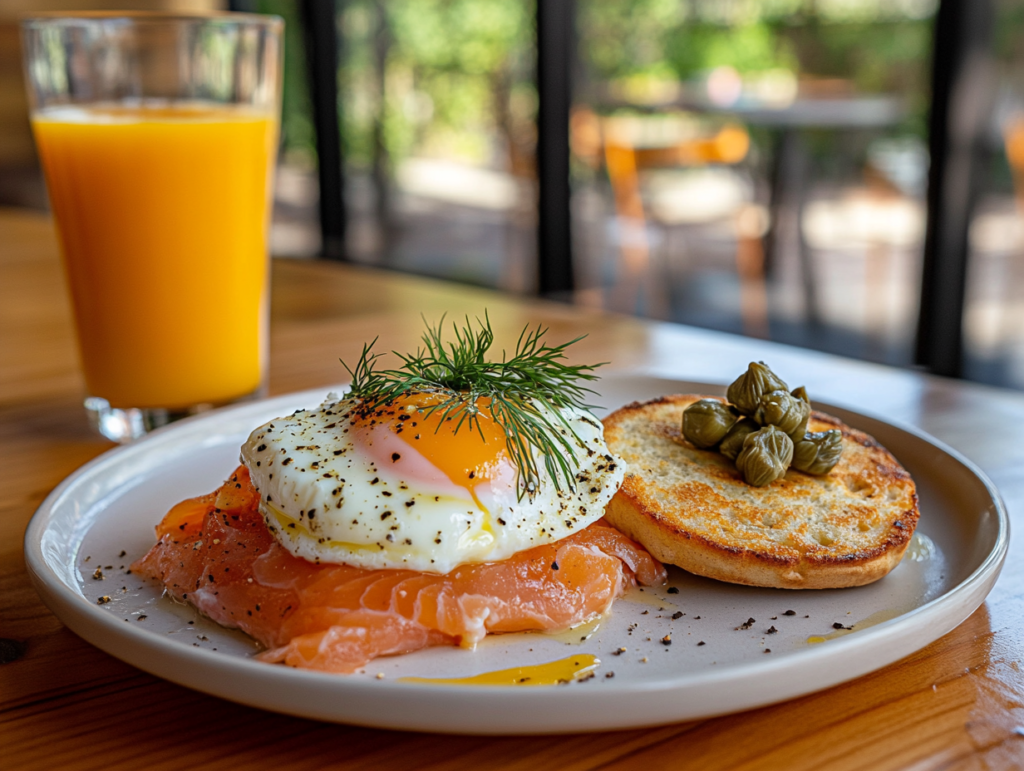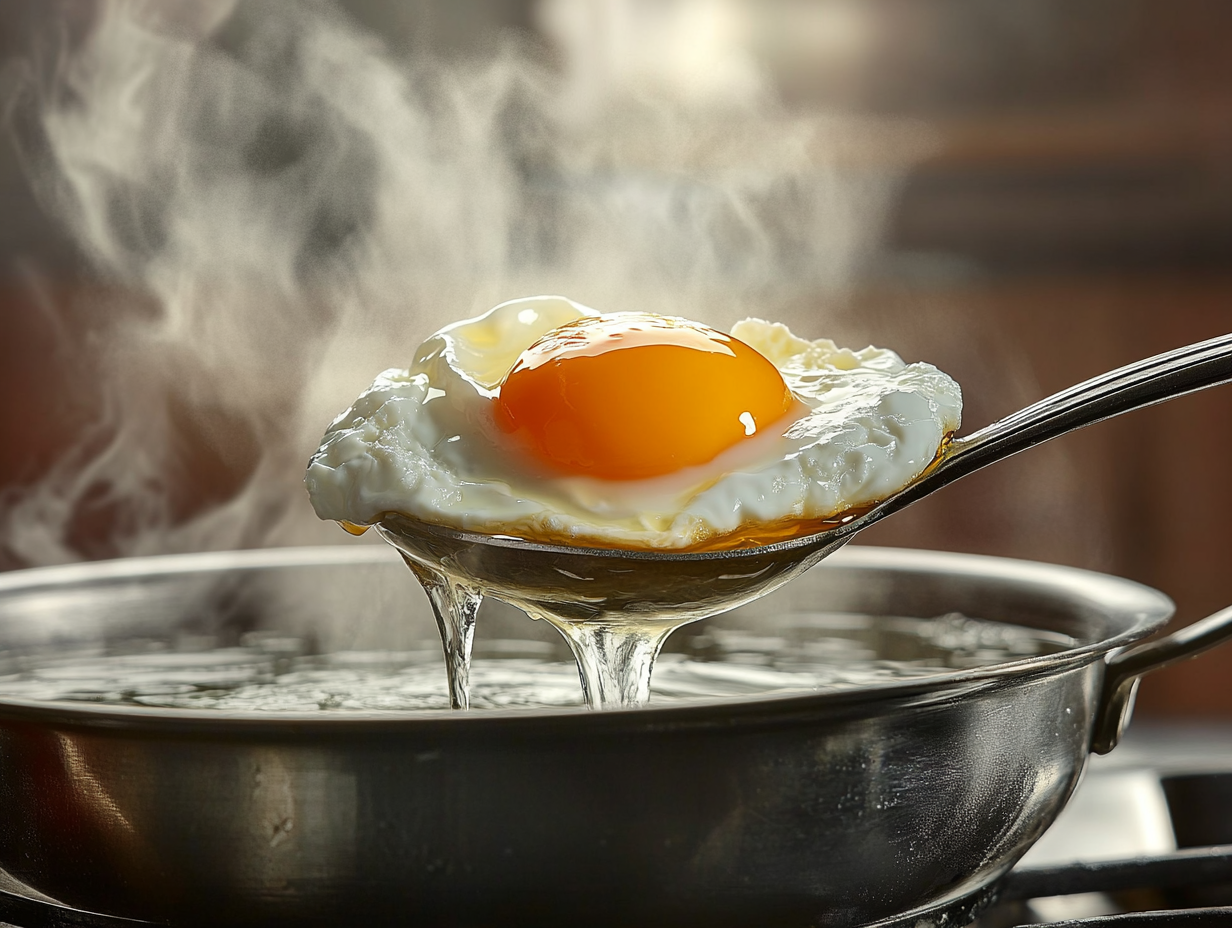Introduction
Eggs Benedict and Eggs Halifax are two delightful dishes that have earned a place on breakfast and brunch menus worldwide. But what exactly sets these two apart? This article dives deep into their origins, ingredients, nutritional values, and culinary techniques. You’ll not only discover the difference between Eggs Halifax and Eggs Benedict, but you’ll also learn how to recreate these iconic dishes at home, all while exploring fun variations and ideal serving suggestions. Let’s begin our flavorful journey!
Part 1: Introduction to Eggs Benedict and Its Variations

Origins of Eggs Benedict
Eggs Benedict has an intriguing history that dates back to 19th-century New York. According to popular lore, a hungry Wall Street broker named Lemuel Benedict walked into the Waldorf Hotel seeking a cure for his hangover. He requested buttered toast, poached eggs, crisp bacon, and hollandaise sauce. The chef loved the idea, tweaked the recipe, and voilà—Eggs Benedict was born.
Other accounts credit Delmonico’s Restaurant, another New York institution, with creating the dish for a regular customer named Mrs. LeGrand Benedict. Regardless of the tale, one thing is clear: this dish is steeped in history and innovation. For a deeper dive into its backstory, check out the History of Eggs Benedict.
Classic Ingredients of Eggs Benedict
The traditional recipe for Eggs Benedict includes:
- Poached eggs placed atop
- An English muffin, split and toasted,
- A layer of Canadian bacon (sometimes swapped for ham),
- And the pièce de résistance, a velvety hollandaise sauce.
This decadent combination offers a rich, savory flavor that’s become a staple of brunch culture worldwide. It’s versatile, too, paving the way for many creative variations.
Stay tuned for Part 2, where we explore Eggs Halifax—its history, ingredients, and how it compares to the classic Eggs Benedict!
Part 2: Understanding Eggs Halifax

Origins of Eggs Halifax
Eggs Halifax is a delightful twist on the classic Eggs Benedict. While its exact origin is less documented than its cousin, it likely emerged as a regional variation popularized by the use of smoked salmon—a nod to Halifax, Nova Scotia, renowned for its fresh seafood. The name itself is thought to pay homage to the area’s rich culinary traditions, particularly its connection to Atlantic salmon.
Though similar in structure to Eggs Benedict, this dish replaces the traditional Canadian bacon with smoked salmon, making it a seafood lover’s dream. Over time, Eggs Halifax gained popularity for its lighter yet flavorful profile, often enjoyed by those seeking an alternative to meat-heavy breakfast options.
Ingredients of Eggs Halifax
The beauty of Eggs Halifax lies in its simple yet elegant components. The dish features:
- Perfectly poached eggs as the centerpiece,
- A toasted English muffin base for a satisfying crunch,
- Smoked salmon, adding a luxurious and smoky touch,
- And a generous drizzle of creamy hollandaise sauce.
Some variations may include a sprinkle of fresh dill or capers, enhancing its bright, briny notes. This seafood-centric take has earned a special place on breakfast and brunch tables, particularly in coastal regions where salmon reigns supreme.
Stay tuned for Part 3, where we uncover the key differences between Eggs Halifax and Eggs Benedict, diving into their ingredients, flavors, and regional influences!
Part 3: Key Differences Between Eggs Halifax and Eggs Benedict
Protein Component: Canadian Bacon vs. Smoked Salmon
The most obvious difference between Eggs Halifax and Eggs Benedict lies in the protein choice. Eggs Benedict traditionally uses Canadian bacon or ham, delivering a savory, slightly salty flavor with a hearty texture. In contrast, Eggs Halifax swaps this for smoked salmon, which adds a smoky, delicate flavor with a buttery, melt-in-your-mouth texture.
This substitution not only changes the dish’s taste profile but also appeals to seafood lovers and those seeking a lighter, more refined option. The switch from meat to fish also makes Eggs Halifax an attractive choice for pescatarians.
Regional Popularity and Naming Conventions
Eggs Benedict enjoys global recognition and is a staple on brunch menus everywhere. Its association with high-end New York dining and its adaptable recipe have made it a cultural icon. On the other hand, Eggs Halifax is less ubiquitous but shines in regions with strong ties to seafood, such as Canada’s Atlantic provinces.
The name “Halifax” often reflects the dish’s maritime roots, while “Benedict” has a more cosmopolitan flair. These naming conventions not only highlight the dishes’ origins but also hint at the cultural significance behind each recipe.
Stay tuned for Part 4, where we take a closer look at the nutritional comparison between these two beloved brunch options!
Part 4: Nutritional Comparison
Caloric Content
When it comes to calories, there’s a notable difference between Eggs Halifax and Eggs Benedict. Eggs Benedict, with its Canadian bacon and buttery hollandaise sauce, typically has a higher caloric content. A standard serving can range from 400 to 600 calories, depending on portion size and preparation methods.
Eggs Halifax, on the other hand, often leans lighter due to the use of smoked salmon, which contains fewer calories and less fat compared to bacon. A typical serving of Eggs Halifax comes in at around 350 to 500 calories, making it a slightly leaner option for those watching their intake.
Nutrient Profiles
Eggs Halifax stands out for its omega-3 fatty acids, thanks to the smoked salmon. These healthy fats support heart and brain health, giving the dish a nutritional edge. Additionally, salmon provides a rich source of protein, vitamin D, and selenium.
Eggs Benedict, while slightly higher in saturated fats due to the bacon, also offers a substantial amount of protein, iron, and vitamin B12. The hollandaise sauce in both dishes adds vitamin A and a dose of decadence, though it contributes significantly to the fat content.
For a more detailed comparison, consider exploring how similar dishes measure up nutritionally. If you’re curious about perfecting poached eggs, check out this helpful guide on How to Poach Eggs Perfectly.
Stay tuned for Part 5, where we dive into the culinary techniques involved in preparing these mouthwatering dishes!
Part 5: Culinary Techniques Involved
Poaching Eggs Perfectly
Mastering the art of poaching eggs is crucial for creating both Eggs Benedict and Eggs Halifax. The technique may seem intimidating, but with a few key tips, you’ll achieve restaurant-quality results every time:
- Use fresh eggs: Fresh eggs hold their shape better when poached.
- Add a splash of vinegar: A small amount of vinegar in simmering water helps the egg whites coagulate faster.
- Create a whirlpool: Stir the water to form a gentle whirlpool before adding the egg. This keeps the whites from spreading too much.
- Cook for 3-4 minutes: The egg white should be set while the yolk remains runny.
Poached eggs are the crown jewels of both dishes, so taking the time to perfect this step is well worth the effort.
Preparing Hollandaise Sauce
Hollandaise sauce is the luxurious finishing touch that ties these dishes together. While it’s known for its richness, making hollandaise can be a delicate process. Follow these steps for a foolproof result:
- Whisk egg yolks: Combine egg yolks with a splash of water or lemon juice in a heatproof bowl.
- Use gentle heat: Place the bowl over a pot of simmering water, whisking constantly to avoid scrambling the eggs.
- Gradually add melted butter: Slowly drizzle in melted butter while whisking until the sauce thickens and becomes creamy.
- Season to taste: Finish with a pinch of salt and a touch of cayenne pepper or paprika for flavor.
Both Eggs Halifax and Eggs Benedict rely on this silky sauce, so getting it right is essential for achieving the authentic taste.
Stay tuned for Part 6, where we explore variations and serving suggestions to elevate these classic dishes to the next level!
Part 6: Variations and Serving Suggestions
Variations and Similar Dishes
Both Eggs Benedict and Eggs Halifax have inspired countless variations, showcasing their versatility. Here are a few popular twists:
- Eggs Royale: A close cousin to Eggs Halifax, this dish also features smoked salmon but often includes a sprinkle of chives or dill for added freshness.
- Eggs Florentine: This vegetarian option replaces the protein with sautéed spinach, offering a lighter and greener take on the classic.
- Other Regional Variations: From avocado-topped versions to crab cake bases, creative interpretations abound, each adding a unique flair to the original recipe.
These variations ensure there’s something for everyone, whether you prefer seafood, vegetarian, or experimental brunch dishes.
Serving Suggestions and Pairings
- Ideal Side Dishes:
- Crisp roasted potatoes or hash browns add a satisfying crunch.
- A light side salad with arugula or mixed greens balances the richness of the main dish.
- Fresh fruit medleys or berry parfaits offer a refreshing contrast.
- Beverage Pairings:
- Herbal teas or freshly brewed coffee pair beautifully with both dishes.
- Fresh juices like orange or grapefruit provide a zesty, invigorating touch.
Each pairing enhances the flavors and complements the creamy, savory elements of these breakfast staples, turning any meal into a gourmet experience.
Stay tuned for Part 7, where we dive into step-by-step recipes for making Eggs Halifax and Eggs Benedict at home and answer frequently asked questions about these iconic dishes!
Part 7: How to Make Eggs Halifax and Eggs Benedict at Home
Step-by-Step Recipe for Eggs Benedict
Ingredients:
- 2 English muffins, split and toasted
- 4 eggs
- 4 slices of Canadian bacon
- Hollandaise sauce (prepared as per instructions below)
- Fresh parsley for garnish
Instructions:
- Prepare the bacon: In a skillet, lightly brown the Canadian bacon on both sides. Set aside.
- Poach the eggs: Fill a saucepan with water, bring it to a gentle simmer, and add a splash of vinegar. Create a whirlpool and gently slide in each egg. Cook for 3-4 minutes, then transfer to a paper towel.
- Assemble the base: Place the toasted English muffin halves on plates. Top each half with a slice of Canadian bacon.
- Add poached eggs: Carefully place a poached egg on top of the bacon.
- Drizzle with Hollandaise: Generously spoon Hollandaise sauce over each egg.
- Garnish and serve: Sprinkle with fresh parsley and serve immediately.
Step-by-Step Recipe for Eggs Halifax
Ingredients:
- 2 English muffins, split and toasted
- 4 eggs
- 4 slices of smoked salmon
- Hollandaise sauce (prepared as per instructions below)
- Fresh dill or capers for garnish
Instructions:
- Prepare the salmon: Ensure the smoked salmon slices are thin and ready to use.
- Poach the eggs: Follow the same poaching instructions as for Eggs Benedict.
- Assemble the base: Place the toasted English muffin halves on plates. Top each half with a slice of smoked salmon.
- Add poached eggs: Place a poached egg on top of the salmon slices.
- Drizzle with Hollandaise: Pour Hollandaise sauce generously over each egg.
- Garnish and serve: Add a sprinkle of dill or a few capers for a bright, briny touch.
Part 8: Frequently Asked Questions (FAQs)
- What is the origin of the name “Eggs Benedict”?
- The dish was named after Lemuel Benedict, a Wall Street broker, or possibly Mrs. LeGrand Benedict, depending on the tale.
- Can I substitute the English muffin in these recipes?
- Absolutely! Bagels, croissants, or even slices of sourdough bread make excellent alternatives.
- Is Hollandaise sauce safe to eat during pregnancy?
- Ensure the eggs are pasteurized and the sauce is served fresh to minimize any risks.
- What are some vegetarian alternatives to these dishes?
- Try Eggs Florentine, which substitutes the protein with sautéed spinach, or experiment with avocado or roasted vegetables.
- How can I make a healthier version of these dishes?
- Use Greek yogurt in place of some butter in the Hollandaise sauce and opt for whole-grain English muffins.
- What is the best way to reheat leftovers?
- Poached eggs are best made fresh, but you can gently reheat them in warm water. Hollandaise sauce can be reheated over low heat with constant stirring.
Conclusion
Eggs Benedict and Eggs Halifax are both rich in flavor and steeped in culinary tradition. Whether you prefer the hearty, savory profile of Eggs Benedict or the light, smoky elegance of Eggs Halifax, each dish is a testament to the art of breakfast. By mastering the techniques and understanding their origins, you can bring the joy of these classics to your own table.

